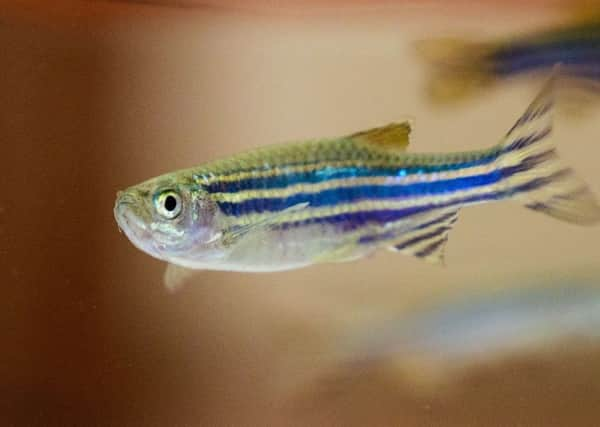Secrets of a zebrafish’s heart shown in new image


Researchers from the Universities of Glasgow and Edinburgh have developed a new method to capture 3D video images of the growing hearts of zebrafish embryos for the first time.
Zebrafish hearts are surprisingly similar to those of humans, making them useful in cardiac research.
Advertisement
Hide AdAdvertisement
Hide AdThe British Heart Foundation (BHF) – one of the funders of the study – hope the new method of visualising zebrafish hearts will provide scientists with valuable new insights into the cellular and subcellular processes which occur during the earliest stages of heart development.
The development of the imaging breakthrough was led by Dr Jonathan Taylor of the University of Glasgow’s School of Physics and Astronomy, working closely with colleagues at the University of Edinburgh’s BHF Centre for Cardiovascular Science.
Their novel fluorescence time-lapse imaging technique uses a very thin sheet of laser light to build up images into a full 3D image of the heart layer by layer.
While 3D images of the beating heart had been recorded in the past, there was still more work to be done to turn a 3D freeze-frame of a single point in time into what cardiac researchers really wanted to study: a time-lapse video of the heart growing over a full day.
The new technique also allows researchers to see for the first time individual heart cells growing and dividing in the beating heart in astonishing detail over 24 hours.
Dr Taylor said: “Zebrafish embryos’ hearts beat three times a second, and this constant motion makes them incredibly challenging targets to image accurately in three dimensions.
“By the time you’ve taken an image of one layer of the heart, it has moved on to another part of its cardiac cycle. To add to the challenge, heart cells can be damaged by over-exposure to laser light that is needed for fluorescence imaging”.
To overcome those challenges, the researchers developed a computer programme which uses real time image analysis to control exactly when to fire the lasers for imaging the heart.
Advertisement
Hide AdAdvertisement
Hide AdDr Taylor added: “Our microscope uses visible light to ‘watch’ the beating heart of the zebrafish through its transparent skin, allowing our computer programs to know exactly when to selectively fire laser light at the heart to capture specific moments in its cycle. This lets us watch continuously as the heart forms over the course of a whole day, without causing any harm to the fish. It’s pulled back the veil on processes such as cell division within the heart which we just didn’t have any way to visualise before.”
Dr Martin Denvir, of the University of Edinburgh, worked with Dr Taylor to develop the new technique.
He said: “This exciting breakthrough, which brings together state-of-the-art research in physics and engineering at Glasgow and Durham with our heart research here in Edinburgh, has allowed us to see live processes in heart formation which we’ve simply had no way to observe before.”